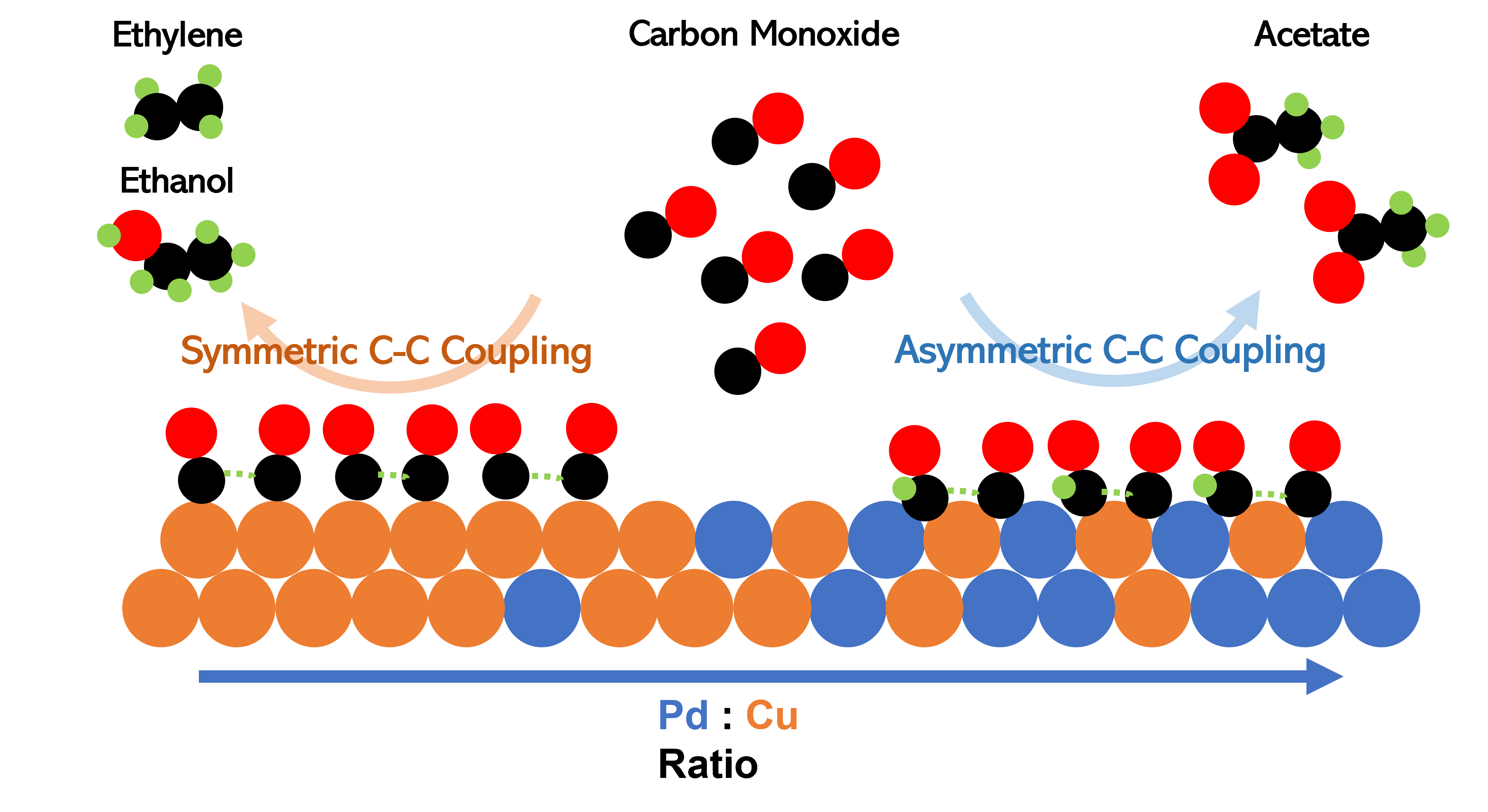(664e) Asymmetrical C–C Coupling for Electroreduction of CO on Bimetallic Cu–Pd Catalysts
AIChE Annual Meeting
2023
2023 AIChE Annual Meeting
Catalysis and Reaction Engineering Division
Electrocatalysis & Photocatalysis I: Electrocatalytic CO2 and CO Reduction
Monday, November 6, 2023 - 4:50pm to 5:10pm
Electrochemical reduction of carbon dioxide (CO2) is promising for the mitigation of carbon emissions and building up carbon-neutral energy infrastructures. However, the undesired side reaction with CO2 has limited the practical implementation of alkaline electrolytes in CO2 electrolyzers. This challenge can be circumvented by the sequential electroreduction of CO2 to CO and then CO to C2+. Thus, electroreduction of carbon monoxide (CO) possesses great potential for achieving the renewable synthesis of hydrocarbon chemicals from CO2. We report here selective reduction of CO to acetate using Cu–Pd bimetallic electrocatalysts. Surfactant-free Cu–Pd nanocrystals were synthesized with control over the composition (Cu70Pd30, Cu49Pd51, Cu23Pd77) and applied for electrocatalytic studies by using gas-diffusion electrodes and flowing alkaline catholytes. High activity and selectivity are demonstrated for CO-to-acetate conversion with >200 mA/cm2 in geometric current density and >65% in Faradaic efficiency (FE). An asymmetrical C–C coupling mechanism is proposed to explain the composition-dependent catalytic performance and high selectivity toward acetate. This mechanism is supported by the computationally predicted shift of the *CO adsorption from the top-site configuration on Cu (or Cu-rich) surfaces to the bridge sites of Cu–Pd bimetallic surfaces, which is also associated with the reduction of the CO hydrogenation barrier. Further kinetic analysis of the reaction order with respect to CO and Tafel slope supports a reaction pathway with *CO–*CHO recombination following a CO hydrogenation step, which could account for the electroreduction of CO to acetate on the Cu–Pd bimetallic catalysts. Our work highlights how heteroatomic alloy surfaces can be tailored to enable distinct reaction pathways and achieve advanced catalytic performance beyond monometallic catalysts.


